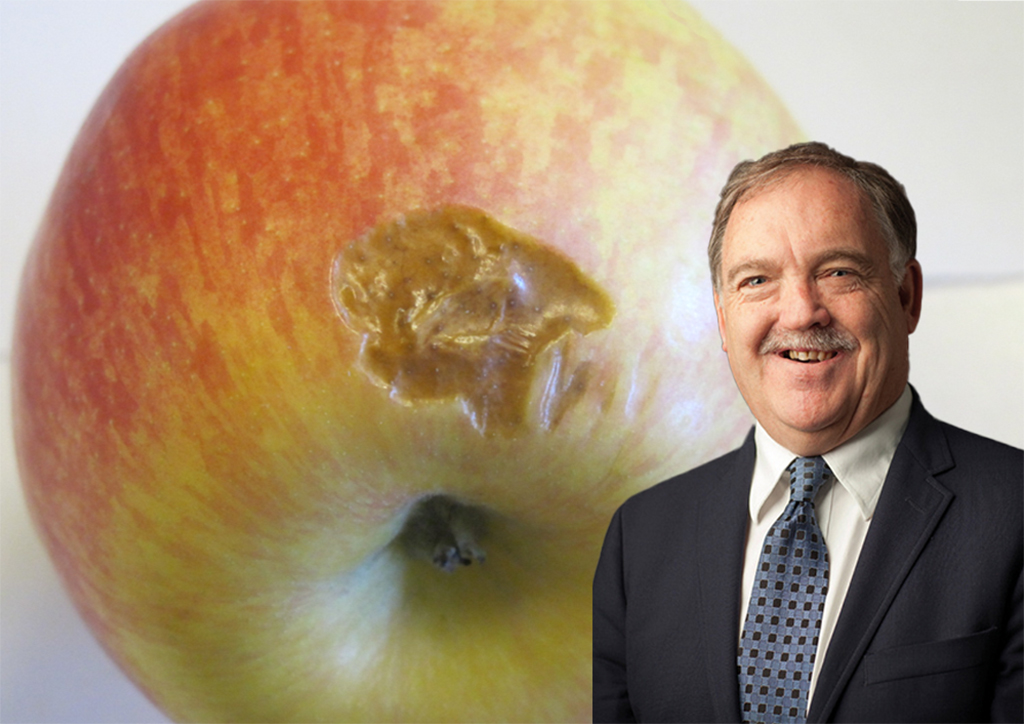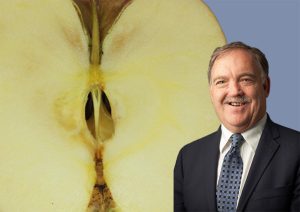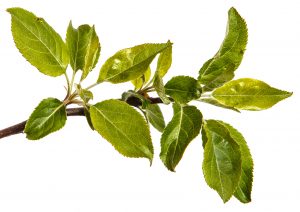
How preharvest PGRs impact postharvest quality
Understanding the relationship between the preharvest application of plant growth regulators (PGRs) and fruit maturity is crucial for optimising storage and avoiding disorders. By Anna Mouton.
“What happens on the farm is the most important influence on the postharvest performance of our fruit,” said Prof. Chris Watkins. “Nothing is more obvious to me after my career in postharvest.”
Watkins has been a postharvest researcher in the Horticulture Section of the School of Integrative Plant Science at Cornell University since 1994. Before that, he was based at the Plant and Food Research Institute in New Zealand.
In a keynote presentation at the Hortgro Science Postharvest Symposium, Watkins explored the interaction between preharvest application of 1-MCP (1-methylcyclopropene) and AVG (aminoethoxyvinylglycine) and postharvest storage disorders in apples.
The changing role of PGRs
“When I first came to Cornell, our emphasis was on preventing preharvest drop,” recalls Watkins. “Some of the varieties at that time were very prone to massive losses about the time that the apples turned red.”
Subsequently, the focus shifted to delaying harvest to allow additional fruit growth. Although that is still an essential function of preharvest PGRs, Watkins said harvest and labour management have become the biggest drivers.
“We have some real crises in terms of being able to manage the harvest, especially in our current environment,” he said.
According to Watkins, the experience of apple growers in New York State with PGRs has been mostly positive, but preharvest PGRs can have unintended postharvest effects. Because PGRs delay ripening, they tend to diminish disorders associated with later harvest but exacerbate disorders associated with earlier harvest.
The former includes soft scald, flesh browning, watercore, and senescent breakdown. The latter include bitter pit, leather blotch, superficial scald, and carbon dioxide injuries.
“And then we have the added complexity of the interaction between preharvest and postharvest 1-MCP, which is not always positive,” remarked Watkins.
Which disorders increase?
Watkins illustrated the potential detrimental effects of preharvest PGRs with the results of storage trials on Honeycrisp. Fruit treated with 1-MCP one week before harvest or with a half rate of AVG two weeks before harvest were compared with an untreated control. All fruit were conditioned at 10 °C for one week before being stored in 3% oxygen at 3 °C for six months. Conditioning helps prevent soft scald.
He noted that, in practice, New York State growers tend to apply 1-MCP two weeks and AVG three weeks before harvest. “The half rate of AVG is to reduce colour drag on the fruit,” he explained.
Each experimental group was further divided into two subgroups: one that received a postharvest 1-MCP application and an untreated control.
The occurrence of core browning and internal carbon dioxide injury was significantly higher in fruit treated with 1-MCP and AVG before harvest than in the untreated control. Postharvest 1-MCP application did not mitigate this effect.
The occurrence of bitter pit was greater in fruit treated with 1-MCP pre- and postharvest than in fruit that only received 1-MCP after harvest.
“1-MCP and AVG slow maturation, so you have an increased risk of disorders associated with early harvest,” said Watkins.
Which disorders decrease?
Watkins singled out stem-end flesh browning in Gala as a disorder which is decreased by preharvest PGR applications. He shared the results of trials that assessed storage disorders in fruit treated and untreated with AVG (at half rate), harvested on different dates (7, 14, and 21 September), and stored under various conditions (either 0.5% or 2.0% oxygen, and either 0.5 °C or 3.0 °C).
Controlled atmosphere was initiated eight days after harvest, and the fruit were stored for nine months.
As expected, preharvest AVG treatment reduced starch breakdown and maintained background colour compared with the untreated control. In fruit not treated with AVG, those harvested later had more flesh browning than those harvested earlier.
Fruit that wasn’t treated with AVG developed more flesh browning when stored at 2% than at 0.5% oxygen, and at 0.5 °C than at 3.0 °C. The untreated fruit stored at 0.5% oxygen and 3.0 °C had almost no flesh browning. Regardless of storage conditions, preharvest AVG application reduced flesh browning.
“Postharvest 1-MCP had very little effect,” said Watkins, “but AVG caused a marked decrease in browning.”
Timing matters
The timing of PGR applications is critical. To demonstrate this, Watkins showed data from a trial comparing AVG application at seven and 21 days preharvest. The Gala apples were stored in 2.0% oxygen at 0.5 °C for five and seven months, and assessed after seven days of shelf life.
The fruit treated seven days before harvest had similar starch breakdown, background colour, and firmness as untreated fruit. Fruit treated 21 days before harvest had significantly lower starch breakdown, greener background colour, and higher firmness than fruit treated seven days before harvest or untreated fruit.
In addition, AVG application 21 days before harvest controlled flesh browning much better than application seven days before harvest.
“The effectiveness of PGRs in maintaining quality and reducing flesh browning is maximised by earlier sprays,” said Watkins. “The effectiveness reduces as sprays are applied closer to harvest.”
He also shared findings on PGRs and watercore in Fuji and Jonagold. Preharvest 1-MCP and AVG don’t necessarily affect the prevalence of watercore at harvest, but appear to accelerate the watercore dissipation after harvest.
In summary, Watkins emphasised that PGRs profoundly affect fruit physiology, with positive and negative results.
“But these can be managed,” he said. “PGRs are part of our life. The bottom line, especially when pack houses take fruit from various orchard lots, is that it’s critical that those storage operators are informed of grower decisions, so they know that they may have to handle the fruit differently.”
Watch Watkins’ presentation on the Hortgro YouTube channel.






